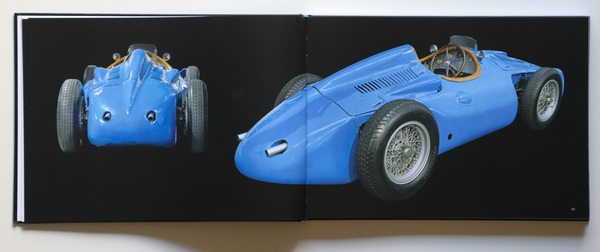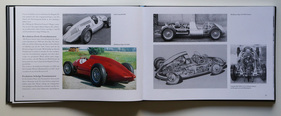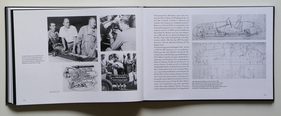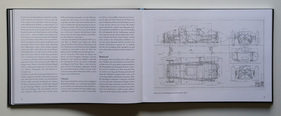Two examples of the Bugatti Type 251 were built in the mid-fifties. They did not win any laurels and Bugatti enthusiasts see the somewhat strange-looking monoposto as an unloved stepchild that neither Ettore nor Jean Bugatti had breathed life into.
The fact that there is nevertheless a book about this racing car shows above all the enthusiasm of two authors who spared no effort to uncover the secrets of what was actually a revolutionary racing car.
Jean-Philippe Müller and Gehard Schütz spent years researching, collecting material and talking to contemporary witnesses, as far as this is still possible half a century later. Surprisingly, both examples built (251/001 and 251/002) have survived to this day, albeit not in their original design, no longer drivable and not quite complete.
Not a real Bugatti?
The Type 251 was actually built by Gioacchino Colombo, the ingenious designer to whom we owe the famous Ferrari V12 engine, among other things, but who also co-developed the Maserati 250F and Alfa Romeo racing cars.
For Colombo, in the service of Bugatti, the mid-engine was a must in racing car construction. With the Bugatti 251, he tried to eliminate some of the disadvantages of this design. He therefore installed the in-line eight-cylinder engine transversely behind the driver. The Type 251 was probably the first racing car with this design, although there are traces of another similar design from that time, which is also listed in the book.

However, it was not only the compact drive, but also the innovative suspension design that made the Bugatti Type 251 so special.
On its own, neither the time nor the means were sufficient to make the 251 successful; it had no chance against the traditionally designed competition of the time.
But did that make it a failure? And not a real Bugatti?
What could have been
Schütz and Müller go through design element after design element to find out how good or bad the basic design was. Historical construction plans are used as well as historical photographs. With the help of the "Musée National de l'Automobile Mulhouse", which now houses the two racing cars, it was also possible to take detailed photos of the cars.

The authors have included almost everything they were able to collect in the 172-page book. They also use the testimonies of contemporary witnesses to get behind the designer's ideas and find out why they didn't work (right away?).
The result is at least a partial rehabilitation of the hapless racing car.
For technology aficionados
No, this is neither a coffee-table book nor light reading to fall asleep to. If you can't get excited about the intricacies of a DeDion rigid axle or the center drive of an inline eight-cylinder engine, you won't be able to really appreciate this book. However, anyone who enjoys analyzing construction plans and is interested in historical racing technology will learn a lot from the Müller/Schütz book and will certainly not be bored.

If you want to learn the basics about the Bugatti Type 251, there is no alternative to this book, which was printed in a small edition. It may seem expensive at CHF/EUR 78.00, but the authors will certainly not get rich from it. They have not pursued their research for profit, but out of sheer enjoyment of the subject matter. The result is a likeable work that can be forgiven for the odd editing or layout weakness.

Bibliographical information
- Title: Bugatti 251 - the unfinished revolution
- Authors: Gerhard Schütz and Jean-Philippe Müller
- Language: German
- Publisher: Eigenverlag
- Edition: 1st edition (251 copies) October 2022
- Format: Hardcover, 21.6 x 30 cm
- Size: 172 pages, 194 illustrations (color and black and white, many construction plans)
- ISBN: none
- Price: CHF/EUR 78 (plus shipping and packaging)
- Buy/order: Only through the publisher via email
























